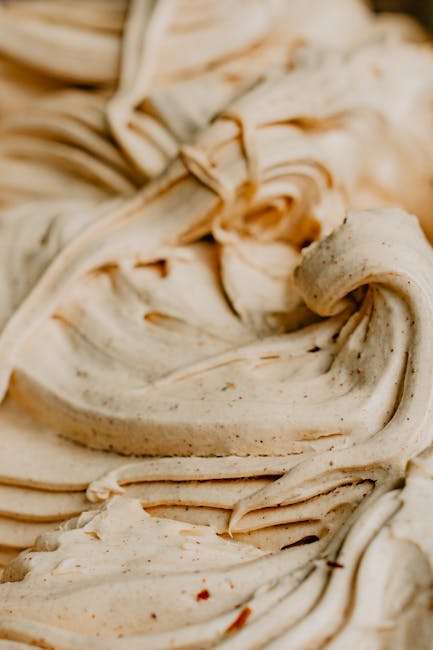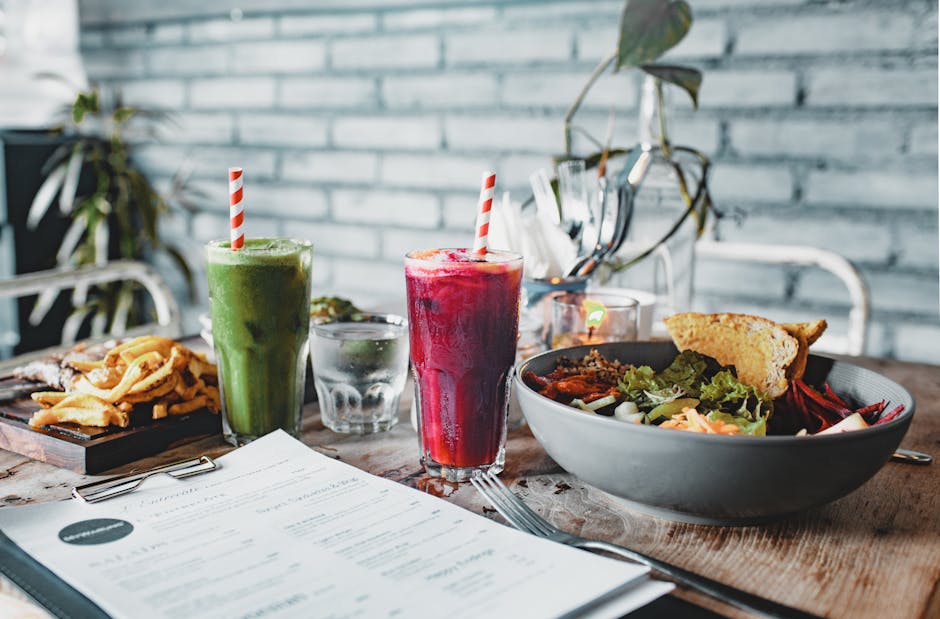A World of Sweetness: Exploring the Delights of a Japanese Supermarket Bakery

A World of Sweetness: Exploring the Delights of a Japanese Supermarket Bakery
Stepping into a Japanese supermarket is an experience in itself – a symphony of perfectly arranged produce, meticulously crafted bento boxes, and the comforting aroma of miso soup. But nestled within this organized chaos, often near the entrance, lies a treasure trove of delightful baked goods: the Japanese supermarket bakery. Forget what you know about your average grocery store bakery; this is something truly special, a reflection of Japanese artistry, culinary innovation, and a deep appreciation for kawaii (cuteness). Prepare your senses for a journey into a world of anpan, melon pan, and so much more!
Imagine walking through the automatic doors, the air suddenly sweeter, softer. The fluorescent lights seem to dim slightly, replaced by the warm glow emanating from the bakery section. Rows upon rows of meticulously arranged breads, pastries, and cakes greet you, each one beckoning with its unique shape, color, and aroma. This isn't just about grabbing a loaf of sliced bread; it's about embarking on a miniature adventure, a quest to discover the perfect treat to brighten your day. The sheer variety is often overwhelming, but in the best possible way. Where do you even begin?
The Allure of Anpan: A Japanese Staple

Let's start with a classic: anpan. This humble, yet iconic, sweet roll is a cornerstone of Japanese bakery culture. It's a soft, slightly sweet bun typically filled with red bean paste (anko). But don't let the simplicity fool you. The beauty of anpan lies in its perfect balance: the pillowy bread complementing the subtly sweet and earthy bean paste. You'll often find anpan topped with sesame seeds, adding a delicate nutty flavor and visual appeal.
Anpan isn't just a tasty snack; it's a piece of history. Legend has it that it was created during the Meiji era at a bakery called Kimuraya, as a way to appeal to Emperor Meiji who wasn't keen on Western bread. Kimura Yasubei, the baker, replaced the sake yeast typically used in bread making with a yeast cultivated from cherry blossoms. He filled the bread with anko instead of jam. The Emperor loved it, and anpan became a national sensation!
Beyond the traditional red bean filling, you might encounter variations with white bean paste (shiro-an), sesame paste, or even chestnut paste. Each bite is a comforting reminder of tradition and the artistry of Japanese baking.
Melon Pan: A Sweet and Crunchy Delight

Next on our tour, we have melon pan. Despite the name, it doesn't actually taste like melon (though some variations might incorporate melon flavoring). Instead, the name comes from its appearance: a round bun with a crisscrossed pattern that resembles the skin of a cantaloupe melon. The magic of melon pan lies in its textural contrast: a soft, fluffy interior enveloped in a crisp, cookie-like crust. The crust is usually made from a sweet dough that is slightly thicker than the bread dough, creating that delightful crunch.
Melon pan is incredibly popular in Japan, and you'll find it in almost every bakery, convenience store, and supermarket. It's the perfect grab-and-go treat, a delightful combination of sweet and satisfying. In recent years, variations have emerged, including chocolate melon pan, matcha melon pan, and even melon pan with a custard filling. The possibilities are endless!
Look closely, and you'll notice subtle differences between melon pan from different bakeries. Some might have a thicker crust, others a softer interior. Some might be dusted with granulated sugar, while others are simply glazed. Experiment and find your favorite!
Shokupan: The Ultimate in Softness

Moving away from the sweeter side of things, let's talk about shokupan. This is Japanese milk bread, and it's renowned for its incredibly soft and fluffy texture. The secret lies in the tangzhong method (also known as water roux), where a portion of the flour is cooked with water or milk before being added to the rest of the ingredients. This pre-gelatinizes the starch, allowing the bread to absorb more moisture and resulting in an incredibly tender crumb.
Shokupan is typically sold in thick, rectangular slices and is perfect for toast, sandwiches, or simply enjoying on its own. Its subtle sweetness and cloud-like texture make it a delightful treat any time of day. You might find shokupan in different variations, such as whole wheat or with added milk powder for an even richer flavor.
In Japan, shokupan is often packaged in beautifully designed bags, reflecting the emphasis on presentation. Even something as simple as sliced bread is elevated to an art form. Look for the little details, the subtle color palettes, and the carefully chosen fonts.
Savory Sensations: Beyond the Sweet

While the sweet breads and pastries tend to steal the spotlight, Japanese supermarket bakeries also offer a delightful array of savory options. These are perfect for lunch, a light snack, or even a quick dinner.
Here are a few savory staples you might encounter:
- Kare Pan (Curry Bread): A deep-fried bread filled with Japanese curry. The crispy exterior and flavorful curry filling make for a satisfying and comforting treat.
- Yakitori Pan: A bun topped with pieces of yakitori (grilled chicken skewers) and a sweet and savory sauce. It's a surprisingly delicious combination of flavors.
- Pizza Pan: A flatbread topped with pizza sauce, cheese, and various toppings. It's a fun and easy alternative to traditional pizza.
- Corn Mayo Pan: A soft roll topped with a creamy mixture of corn and mayonnaise. This may sound unusual, but it's a surprisingly popular and addictive snack.
Don't be afraid to try something new! The savory breads in Japanese supermarket bakeries offer a unique and flavorful experience.
The Aesthetics of Presentation: A Visual Feast

One of the most striking aspects of a Japanese supermarket bakery is the emphasis on presentation. Every item is carefully arranged and displayed, creating a visual feast for the eyes. The breads and pastries are often placed on trays lined with delicate paper doilies, adding a touch of elegance. Clear plastic wrappers protect the baked goods while allowing their beauty to shine through. The lighting is carefully chosen to highlight the colors and textures of the products.
The packaging itself is often a work of art. From the minimalist designs of shokupan bags to the whimsical illustrations on melon pan wrappers, every detail is carefully considered. It's clear that the bakeries understand the importance of visual appeal in attracting customers. After all, we eat with our eyes first!
This dedication to aesthetics extends beyond the bakery section itself. The entire supermarket is designed to be visually appealing, from the neatly stacked produce to the organized shelves of groceries. It's a testament to the Japanese appreciation for beauty in everyday life.
Seasonal Delights: A Rotating Menu of Flavors

Like many aspects of Japanese culture, the offerings at a supermarket bakery often change with the seasons. In the spring, you might find sakura-flavored pastries and breads. During the summer, refreshing citrus-flavored treats are popular. Autumn brings chestnut and pumpkin-flavored delights, while winter features rich chocolate and matcha creations.
This seasonal rotation keeps things fresh and exciting, encouraging customers to return and discover new flavors. It's a reflection of the Japanese appreciation for the changing seasons and the desire to incorporate seasonal ingredients into their cuisine.
Keep an eye out for limited-edition items and special promotions that are tied to specific events or holidays. These are often unique and delicious, offering a glimpse into the creativity and innovation of Japanese bakers.
The Supermarket Experience: More Than Just Baked Goods

The Japanese supermarket bakery is more than just a place to buy bread and pastries; it's an integral part of the overall supermarket experience. It's a place where you can:
- Indulge in a little bit of sweetness: Whether you're craving a classic anpan or a decadent chocolate croissant, the bakery offers a treat for every taste.
- Experience Japanese culinary artistry: The meticulous attention to detail and the use of high-quality ingredients reflect the Japanese dedication to culinary excellence.
- Immerse yourself in Japanese culture: From the traditional flavors to the emphasis on presentation, the bakery provides a glimpse into the unique aspects of Japanese culture.
- Discover new and exciting flavors: The constantly changing menu and the innovative combinations of ingredients ensure that there's always something new to try.
- Simply enjoy the beauty of the moment: Taking a moment to appreciate the artistry and the flavors of a Japanese supermarket bakery can be a truly delightful experience.
So, the next time you find yourself in a Japanese supermarket, don't just rush through the aisles. Take a moment to stop at the bakery and explore the world of sweet and savory delights that awaits you. You might just discover your new favorite treat!
The Japanese supermarket bakery is a testament to the power of simple pleasures, the beauty of everyday objects, and the artistry of Japanese culture. It's a place where you can find a moment of joy in the midst of your busy day, a sweet escape from the ordinary. And that, my friends, is something truly special.
Now, if you'll excuse me, I think I'll go find a melon pan. Itadakimasu! (Let's eat!)
Post a Comment